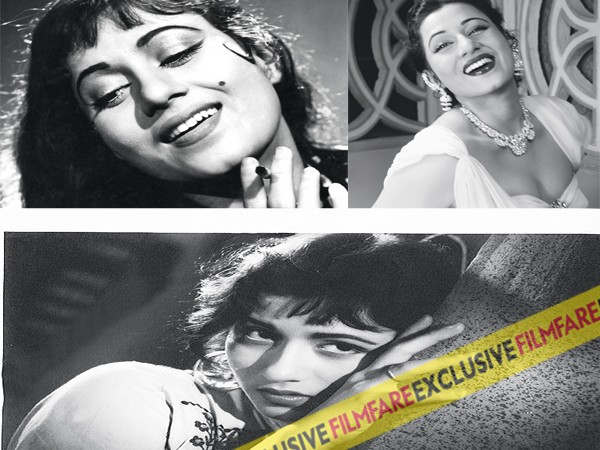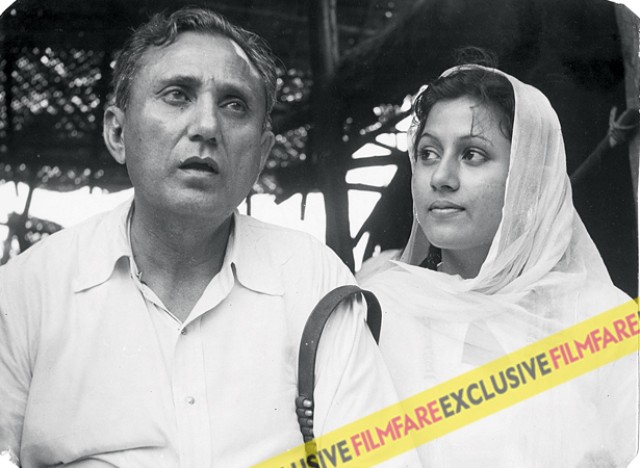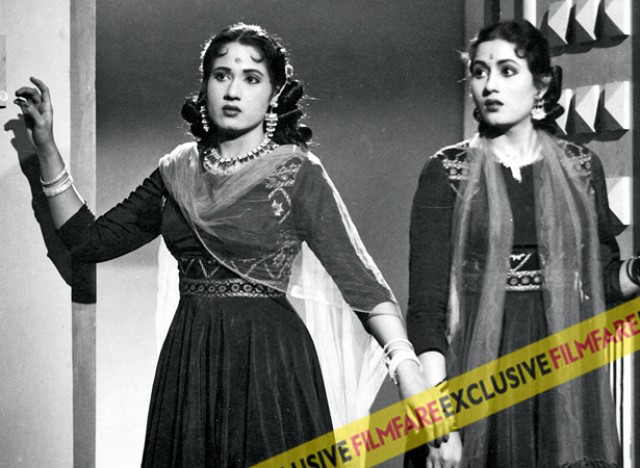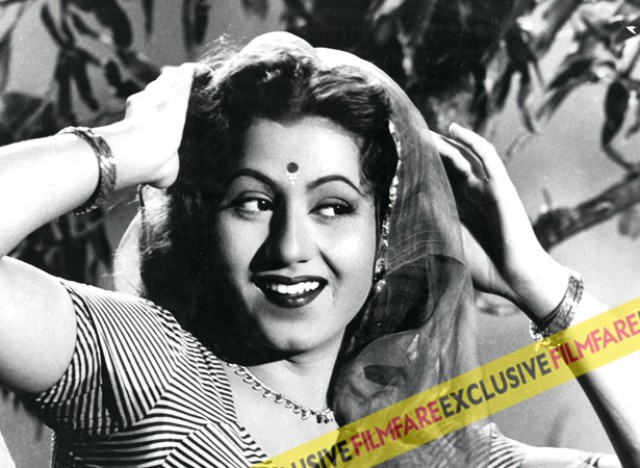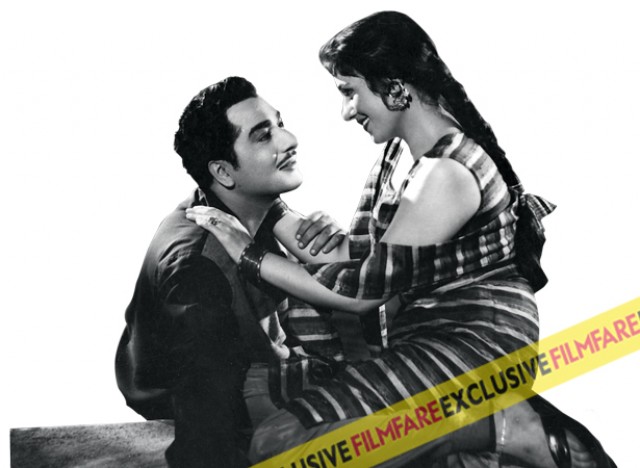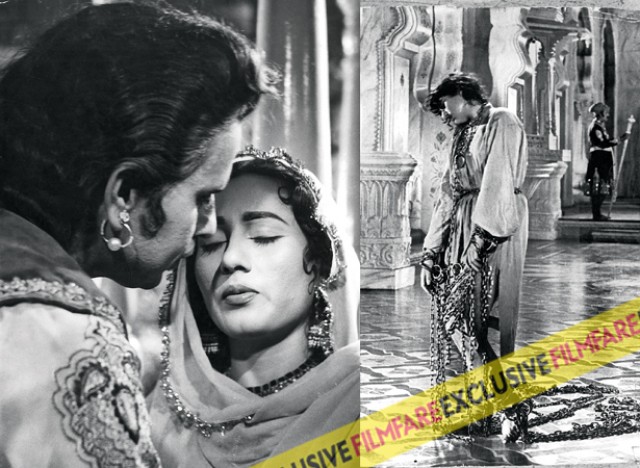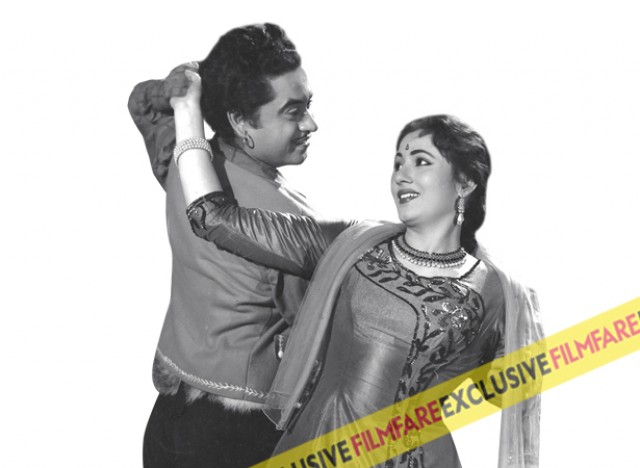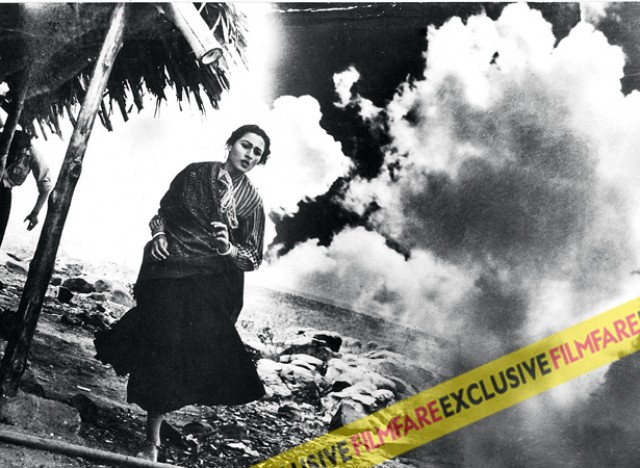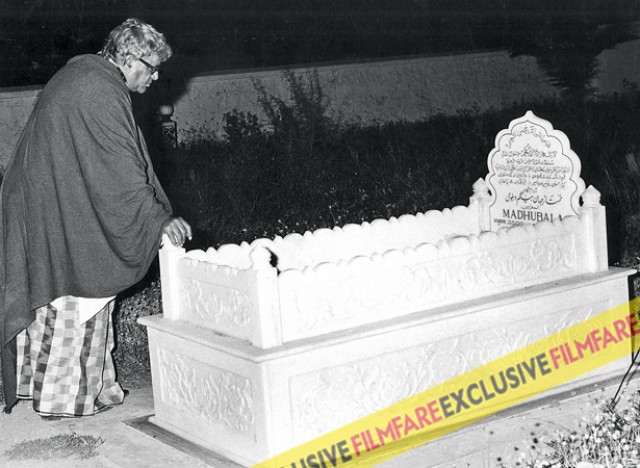NEW DELHI :
The NCPA was keen to host it and Shapoorji Pallonji, the business conglomerate, keen to finance it. And both wanted a “big production”.
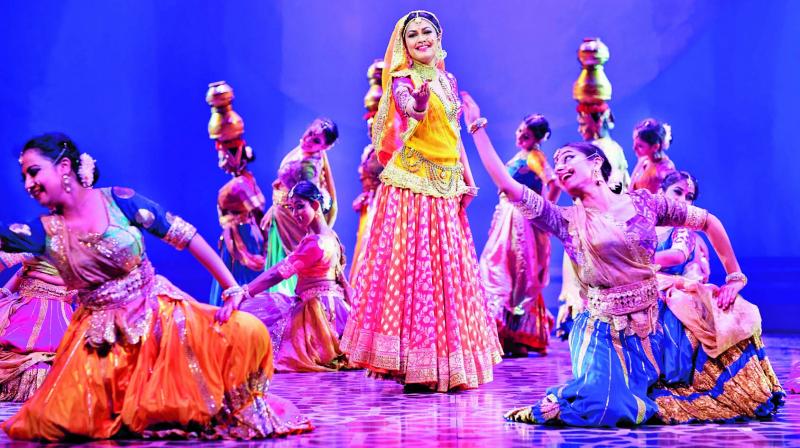
Mostly, perfection is elusive, unattainable. And yet, every society, every culture has something that is, simply, perfect.
Buildings, bridges, monuments, pieces of art, a song, a book, an athlete, a sportswoman or sportsman, a performance, an inning and, sometimes, a movie.
Based on Imtiaz Ali Taj’s 1922 play about the fictional love story of Salim and Anarkali, K. Asif’s Mughal-e-Azam — whose shooting first began in 1946, with Nargis as Anarkali and D.K. Sapru playing Salim, but released finally in 1960 with Dilip Kumar, Madhubala and Prithviraj Kapoor — is one such piece of perfection.
Feroz Abbas Khan, the first artistic director of Mumbai’s Prithvi Theatre and a veteran director with several plays to his credit, including Tumhari Amrita, admits as much. “Mughal-e-Azam, from the play to the script to the screenplay is a piece of literature. The script of Mughal-e-Azam is pitch perfect… It’s one film where everything is perfect. The acting, the screenplay, the dialogue, the music, the lyrics, the performances… And it has a dream cast — you can’t get a cast like that… Madhubala ko dekhiye, aur khatam uske pyaar mein… Mughal-e-Azam ek bahut badi cheez hai,” he says.
And yet, Khan dared to touch this piece of perfection, this sacrosanct icon.
In 2004, Khan was watching the colour version of Mughal-e-Azam when he had an audacious thought: It’s structured like a play and can be staged. But then there were other thoughts. “Sheesh Mahal kahan se aayega?”
It was something he wanted to do, but it didn’t seem possible. It needed a financier with deep pockets and deeper love for Mughal-e-Azam, a stage large enough, skilled production and lighting designers… And, yes, there was also a sense of what a gustakhi it would still be.
“You can do things which, agar nahin bhi theek hua toh log aapko muaf kar denge. Isme toh muafi ki koi gunjayesh hi nahin hai. Sazaye maut!” says Khan.
So for years, the idea of staging Mughal-e-Azam stayed in some corner of his head, circling around his restless to do a huge production, till a casual discussion at Mumbai’s NCPA sometime last year took him to Shapoorji Pallonji, the producers of the film who owned the rights.
The NCPA was keen to host it and Shapoorji Pallonji, the business conglomerate, keen to finance it. And both wanted a “big production”.
The sense of what a gustakhi it was now became a motivator.
“Gustakhi nahin… bewakoofi. Dekhiye aisa hai, ke aapki jo imagination hai, uska size chota kyun hona chahiye? Usmein toh koi paise lagte nahin hain? You have to aspire to be the biggest, the best, and then, somewhere between reality and utopia, you may get to the point of possibility… For me, unless I feel that this is going to go to a point that it could be the biggest disaster, unless I feel that it is something that is really challenging me, toh maza nahin aata mujhe.”
The challenge was to recreate the magic of Madhubala-Dilip Kumar romance, the high drama of a kaneez challenging Akbar the Great in bhari sabha, to pull off in two-and-a-half months of rehearsals what K. Asif had taken 14 years to do.
How do you do that, even if you find the same white ostrich feather and can play the recording of Bade Ghulam Ali Khan sahab? And are lucky enough to find an art designer who can simulate the heady dazzle of Sheesh Mahal which, in the original, required the headlights of 500 trucks?
You don’t. Because you can’t.
Because of the limitations of stage and time, because it’s all live, and because you have neither Dilip Kumar nor Madhubala, you don’t go for drama.
So Khan did the next best thing. He took 38 kathak dancers, added live singing and turned the epic romance into a stunning, spectacular musical.
With 350 cast and crew, 550 dresses, The Great Mughal became The Grand Musical which has run to full houses for four seasons (about 57 shows) in Mumbai, and, since September 9, has had packed shows at the 2,000-seater Jawaharlal Nehru Stadium.
According to Wikipedia, the premiere of K. Asif’s Mughal-e-Azam was held at the 1,100-seater Maratha Mandir in Mumbai where the Sheesh Mahal, transported from the studio, was on display. Outside the hall stood a 40-foot cut-out of Prithviraj Kapoor, and the film’s reels arrived on an decorated elephant, accompanied by the sound of bugles and shehnais.
In Delhi’s Jawaharlal Nehru Stadium, Khan had to remake all his sets from scratch because the stage here is 60 feet, whereas NCPA’s was 36 feet.
And to make the experience palatable and comfortable for the audience, who would be paying anywhere between `500 to `10,000 for a ticket, he had to redo the carpeting, improve the air conditioning, paint the facade and get the loos fixed.
The response has been so overwhelming that Khan has had to extended the Delhi schedule, adding five more shows over three days.
Mughal-e-Azam, the two-hour-15-minute musical is an opulent, nostalgic dance-drama which is beautiful and mesmerising when it’s singing and dancing. Its spectacle is spectacular.
But in moments of intimacy, in scenes with dialogue, it irritates those who have watched Dilip Kumar and Prithviraj Kapoor go head-to-head, and that despite a Salim (played by Dhanveer Singh), whose dialogue delivery and body language are mostly impressive.
The play’s scale is both, its strength and weakness.
The stark sparseness of two characters talking on a huge stage, arriving immediately after sensational dances that rise to an impressive crescendo, needed more drama. But that’s missing.
The actors, though well-rehearsed and speaking in trained diction, often sign off on a lame note. The exits are limp, especially Akbar’s. Anarkali’s body-language and energy is often the opposite of what’s required. In Pyar Kiya Toh Darna Kya, there was no defiance in her body movements, and in a dramatic scene, Salim walked as if on a languid stroll in a park.
Admittedly, this is nitpicking. These are just tiny details. But these small, careless moments get magnified when all that is happening on a 60-foot stage is two characters talking, or an angry Salim walking, and yet his heel-toe movements say nothing.
As Khan himself says, “Ek second bhi hamare liye agar galat hoga, ek empty second can become a minute on stage.”
But, he adds, his musical play works well at both levels — spectacle, and when it’s sparse — and that’s why it is so successful.
Khan credits that to the dialogue which, he says, at once have scale and invoke personal intimacy. “Jab Jodha bolti hai ke, ‘Hamara Hindustan koi tumhara dil nahin ki laundi jiski mallika bane’, and Salim says, ‘Mera dil bhi aapka Hindustan nahin jispar aap hukumat karein…’ Yeh kya hai? Large and personal. It’s in the dialogue.”
But then adds, “See, I’m never going to be totally happy. Because I think there’s still room to do better. But I think, finally, a nice balance has come and the girls are absolutely brilliant.”
After the scene where he irritates with his listless walk, Salim faints and falls so perfectly that it gets a round of applause. And then another song-dance comes on, and the play rises. Till it dips, to rise again… So it goes, dipping and rising, leaving you at the end with admiration for Salim, Anarkali’s live singing, a smile for the chirpy Suraiya, but above all teary-eyed respect for the 38 kathak dancers who create moments so perfect and magical with their feet and ghungroos that Lachhu Maharaj would be proud.
Feroz Abbas Khan attends most rehearsals, often with his eyes closed. Listening and moving his arms around, like a music conductor. He’s simultaneously conducting and imagining the rest — music, lights, costumes, the backdrop, the screens, the impact and the applause.
During the shows he makes notes in his diary under each character’s name and after the curtain call these notes are handed over.
“Har ek character ke naam pe notes bane hote hain, aur hamein end pe woh notes milte hain, ki, okay, tum yahan kamzor the, tumhein ye better karna hai… Mujhe last mila tha ki main jhuk ke chal raha tha… energy kam lagi,” says Dhanveer Singh.
The Mughal-e-Azam script that Khan loves so much was also subjected to his directorial nitpicking.
Khan, who has worked on women empowerment in entertainment, and whose TV serial on DD, Main Kuch Bhi Kar Sakti Hoon, is one of the most watched TV shows in the world, refused to let his female characters be shown as less than his male characters, whatever the hierarchy, situation.
“In the film Saleem slaps Anarkali. Bahar usko jootiyan pehnati hai… I cannot, just cannot, I cannot do this… Mere liye yeh gawara nahin tha ke main aaj ke time mein yeh karoonga. After all, it is imagined history,” says Khan.
So he took these bits out and added an extra dollop of chutzpah and ambition to Anarkali.
Khan’s Anarkali owns her ambition with impressive spunk when she wears the crown and says, “Hindustan ki Mallika toh main hi banongi.”
“Jodha also gives it to Akbar, nor does Anarkali stop at it. When she says, ‘Shahenshah ki behisaab baksheshon ke badle mein, yeh kaneez Jalaluddin Mohammad Akbar ko apna khoon maaf karti hai’, she doesn’t do it, pithy — Ki, ‘Maaf karti hoon’. Aise nahin. She’s (he gestures) “Jaa! Teri kya aukat hai. GO!”
“Ab dekhiye, yeh meri choice hai. Jo main kehta aa raha hoon, even for entertainment, you don’t necessarily have to do good, but you can do a little bit not bad. Maine jhapad nikal diya, toh play kuch kum hua kya?”
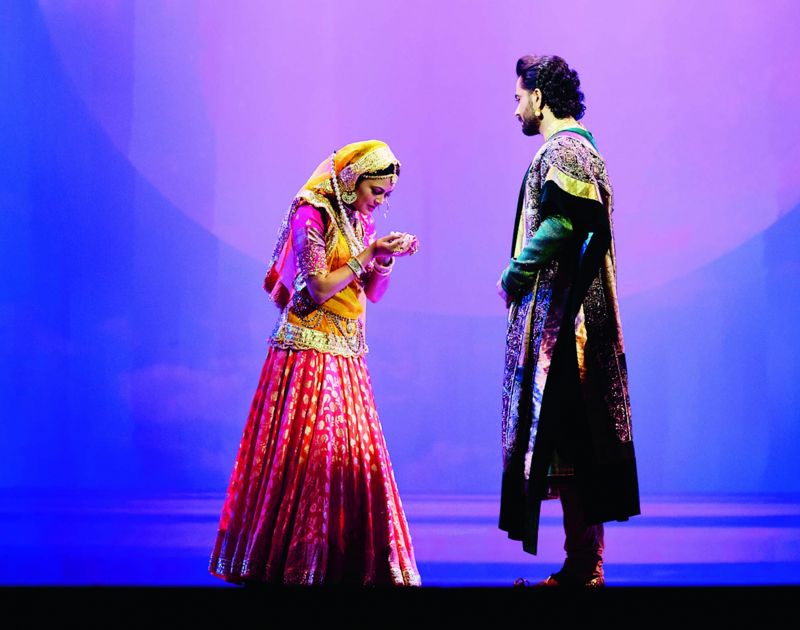
But before these girls, and boys, can flex and flaunt their characters’ chutzpah on stage, they had to undergo some mind games, or what Khan calls “exercises”, for him to gauge whether they can act, and if they can, then “kis gehrai tak”.
Khan, says Singh, is the kind of perfectionist who will not let his actors go to the next word till the previous one is to his satisfaction.
“Unko agar 100% chahiye, toh unko 100% hi chahiye. 99.9% bhi nahin chahiye.”
Khan is not short tempered, says Singh, “but everything about him is grand… unka gussa bhi, pyaar bhi, daant bhi”.
“Woh Mughal-e-Azam se itni mohabbat karte hain ki woh kehte hain, ‘Main kuch bhi bardasht kar sakta hoon, lekin Mughal-e-Azam itni bhi kutahi (negligence) nahin bardasht kar sakta’.”
This perfection ki khoj began early for Khan, and those he thought were not up to putting in the work, or would get distracted by the glamour were weeded out. Like a B-grade Hindi film star who was pretty, a decent dancer and a very decent singer, but had “started celebrating playing Anarkali without going through the process”.
Worse, she wanted to be treated like a star. “She was told in advance ki yahan, if I tell you to come at 8, and you come at 8.05, the gates are closed. You are standing out.”
The starlet was let go. She didn’t have it in her to become Feroz sahab’s Anarkali.
The ones who stayed had to go through the “exercises” for Khan to see if he could actually make them act.
Apart from the basic requirements of the play — that the girls had to be very good singers, very graceful — what was especially important to Khan was that they be sensitive enough to be prodded to become actors if they were not already. And many were not.
“They need to have the sensitivity for me to take them to those areas… they should be neither very cold nor very knotted, because then I won’t be able to access them,” says Khan.
Accessing, he says, is very important because “if you stop yourself from feeling, then how will you believe”.
“The most fundamental thing in acting is believing. When I look at an actor, I first understand the person, what’s gonna tick with him or her, and then trigger that. According to what the person is, I tailor my exercises…”
These exercises, which often push his actors to a point of breakdown, are necessary, he says, to also see if there is vulnerability.
“I don’t like sure-footed characters. Jab tak usmein vulnerability nahin hai, usmein aap ko dimension nahin milta hai. Jab woh bolta hai, ‘Taqdeerein badal jaati hai, zamana badal jaata hai, mulkon ki tarikh badal jaati hai, Shahenshah badal jaate hai… Magar mohabbat jis insaan ka daman thamti hai, woh insaan nahi badalta…’ Jab-tak usmein vulnerability nahin hogi, toh kahan se bolega?”
The applause will come, he says, because these dialogues were written for wah-wah and taaliyan, but without vulnerability in the character, “dialogue bus dialogue reh jayenge.”
After much insistence, Khan reluctantly relents and agrees to share one exercise.
“Bahut saari exercises hain, but I’ll just give you one example. It’s very interesting. This girl, Bahar, the second Bahar, I told her, tomorrow you come, I’m going to do some exercises with you… I had a girl with her. So you take her to a place, a room, where she has come to meet somebody. She meets somebody, and the guy says, I’m going to come back, I’ll leave you here. Then it’s dark… And then somebody comes and puts a cloth around her eyes and then on her mouth and now she is put around a chair and then… I’m giving her the suggestion that five men are now abusing her. One after the other, one after the other, one after the other… It’s all imagination. So I start saying that… they are abusing her, and abusing her… I keep seeing her, and putting up the temperature… to see how far, because some of them refuse to do anything. They think, it’s fun, nothing real. And some of them start believing, get affected immediately, so I know I need to stop there… This girl broke down very badly and for another hour
she just could not get over it. So I realised that she has that sensitivity.”
Zil-e-Elahi, as Khan’s actors refer to him behind his back, narrated two more exercises which were, thankfully, slightly less scary.
Boys get different types of exercises because “Ladkon ki sensitivity bahut kum hoti hai. Ladkon ko zayada waqt lagta hai. Unko bahut mujhe le jana padta hai, but le jata hoon unko bhi main.”
All this because, Khan believes, “agar aap nahin jalenge, toh audience kaise jalegi, zara mujhe bataiye…”
“Jab tak tum khud ko Salim nahin samjhoge, tum kuch kar nahin paoge. Jab tak tum us mohabbat mein nahin jaloge, toh dekhne waale nahin jalenge. Feroz Sir ki is line ne mujhe bahut help ki. Woh paseena jab tak mein apne hathon mein, body mein jalan mehsoos nahin karta hoon toh us din mujhe lagta hai ki maine achcha nahin kiya,” says Singh.
“Main sab ko ye kehta hoon. It’s a simple line… It goes to the heart of the problem. Like, for example, I also tell them, aap ko karna kya hai, aap soch leejiye — you want to impress or you want to actually express…”
Most of Feroz Abbas Khan’s actors picked one. The gustakh director decided that he would do both.
Mughal-e-Azam
Director: Feroz Abbas Khan
Presenters: NCPA, Shapoorji Pallonji
Cast: Nissar Khan (Akbar), Dhanveer Singh (Salim), Priyanka Barve and Neha Sargam (Anarkali), Ashima Mahajan (Bahar), Sonal Jha (Jodha)
Costumes: Manish Malhotra
Production Design: Neil Patel
Projection design: John Narun
Lighting design: David Lander
Choreography: Mayuri Upadhya
Music: Piyush Kanojia
Shows at Jawaharlal Nehru Stadium on Sept. 22, 23, 24, at 3 pm and 7 pm (except on Friday)
source: http://www.asianage.com / The Asian Age / Home> Life> Art / by Suparna Sharma / September 22nd, 2017
